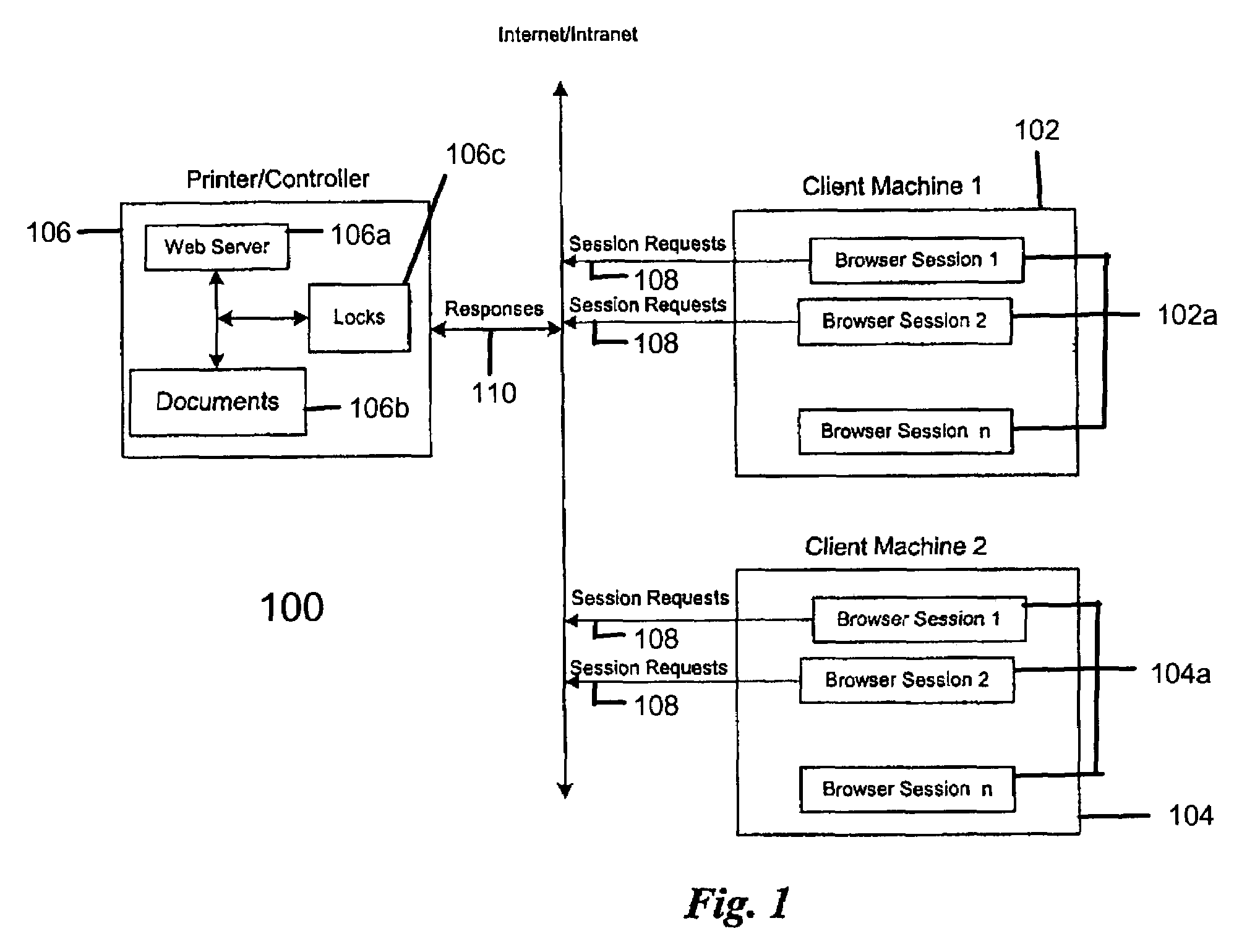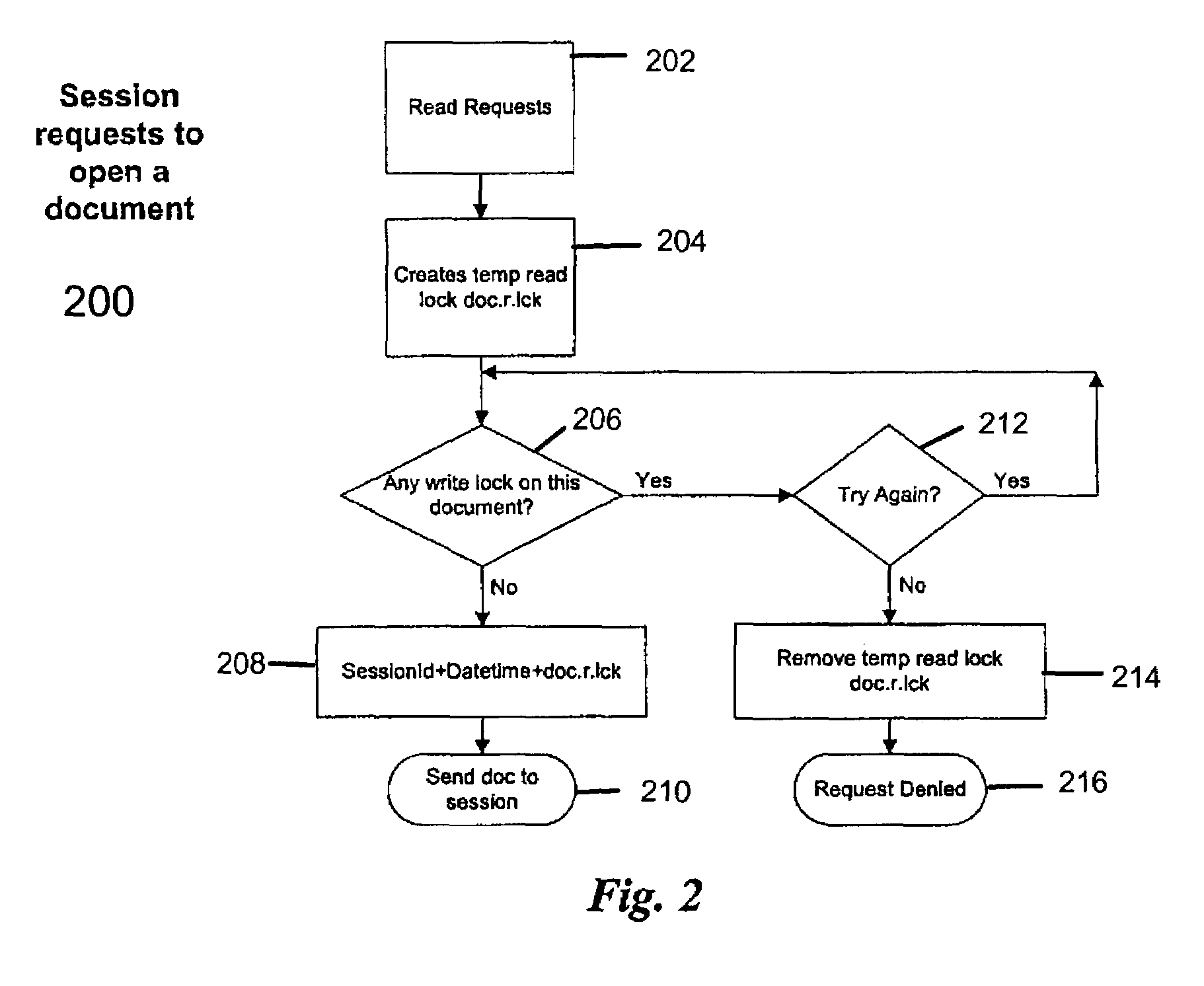Method and implementation of session-based file locking for network applications
a network application and file locking technology, applied in the field of document management, can solve problems such as file deletion, data loss, and irrevocable damage to files
- Summary
- Abstract
- Description
- Claims
- Application Information
AI Technical Summary
Benefits of technology
Problems solved by technology
Method used
Image
Examples
Embodiment Construction
[0017]The invention described herein solves the above problem by providing a file locking method and implementation that imposes a priority system to file access and update. This method allows multiple accesses, multiple reads, and multiple updates to all sessions / users in an orderly fashion so that the result is predictable and the integrity of the file update is preserved. In one exemplary embodiment of the invention, two or more sessions are trying to access a file at the same time. All of these sessions are allowed to open and read the file, but at any one time, only one session will be allowed to change the data displayed in the browser window and to update the file. Additionally, if one session starts to delete a file or folder and has received a permission to delete, all other sessions should not be able to read the folder or a file in this folder. This file locking method sets up a file access priority by using file locks that are date-time stamped and session stamped.
[0018]...
PUM
 Login to View More
Login to View More Abstract
Description
Claims
Application Information
 Login to View More
Login to View More - R&D
- Intellectual Property
- Life Sciences
- Materials
- Tech Scout
- Unparalleled Data Quality
- Higher Quality Content
- 60% Fewer Hallucinations
Browse by: Latest US Patents, China's latest patents, Technical Efficacy Thesaurus, Application Domain, Technology Topic, Popular Technical Reports.
© 2025 PatSnap. All rights reserved.Legal|Privacy policy|Modern Slavery Act Transparency Statement|Sitemap|About US| Contact US: help@patsnap.com



